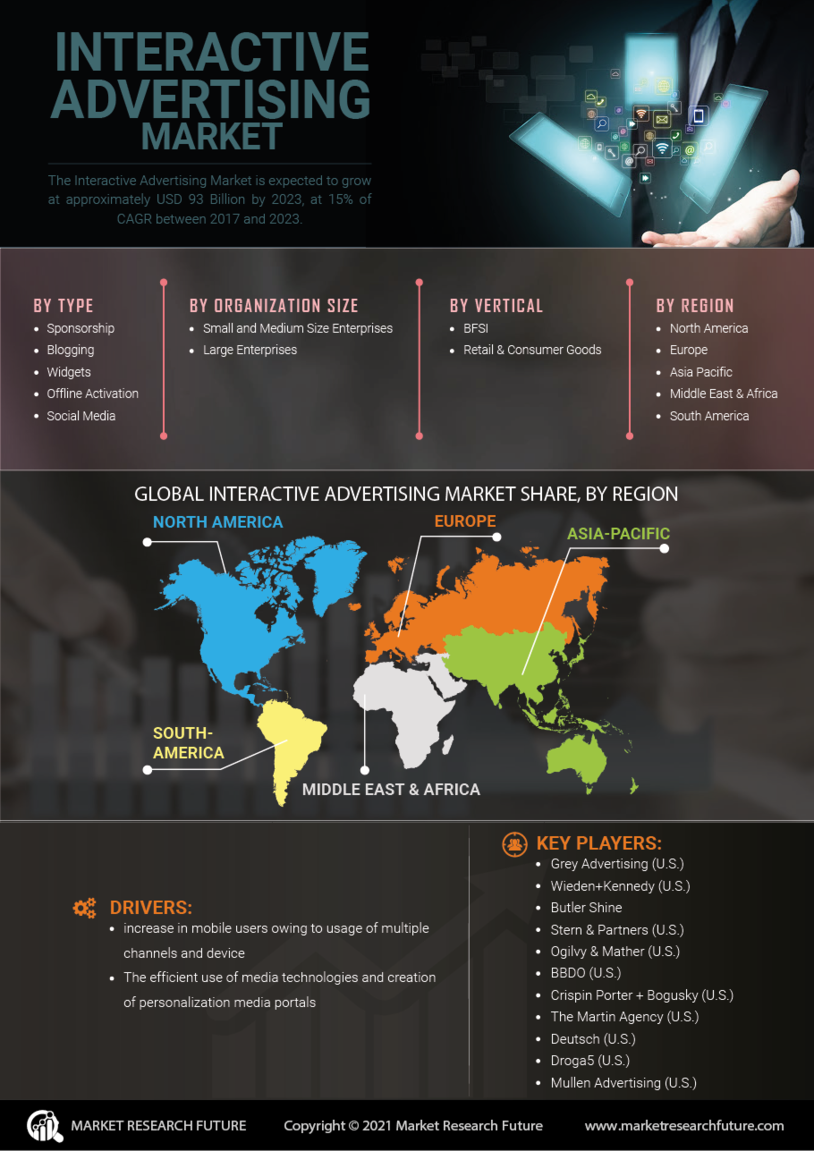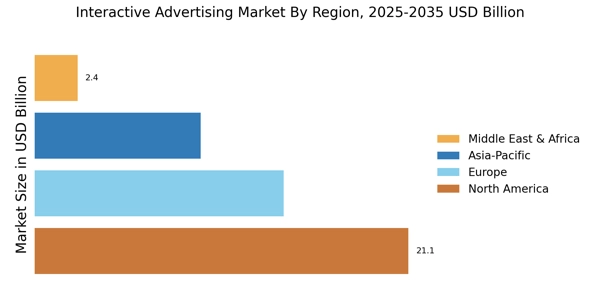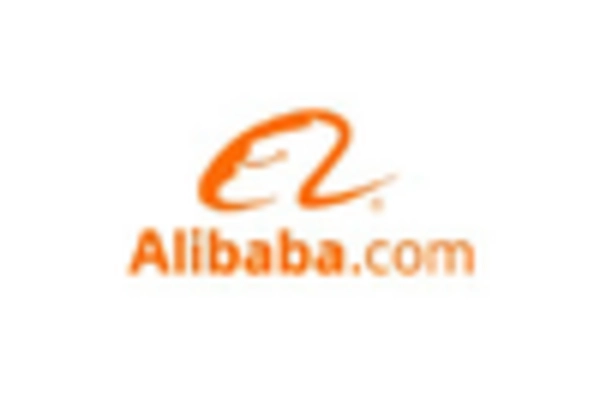Rise of Mobile Advertising
The proliferation of smartphones and mobile devices has catalyzed the expansion of the Interactive Advertising Market. As of 2025, mobile advertising accounts for over 70% of total digital ad spending, indicating a substantial shift in consumer engagement. This trend is driven by the increasing time spent on mobile applications and social media platforms, where interactive ads are more likely to capture user attention. Advertisers are leveraging mobile technologies to create immersive experiences, such as location-based ads and interactive formats that encourage user participation. The integration of mobile payment systems further enhances the effectiveness of these campaigns, allowing for seamless transactions. Consequently, the rise of mobile advertising is reshaping the landscape of the Interactive Advertising Market, compelling brands to innovate and adapt their strategies to meet the demands of a mobile-centric audience.
Integration of Virtual Reality
The integration of Virtual Reality (VR) technology is emerging as a transformative force within the Interactive Advertising Market. By 2025, the VR advertising market is expected to surpass 10 billion dollars, reflecting a growing interest in immersive experiences. Brands are increasingly utilizing VR to create engaging narratives that captivate audiences, allowing consumers to interact with products in a virtual environment. This technology not only enhances user engagement but also provides valuable insights into consumer behavior through analytics. As VR becomes more accessible, advertisers are likely to explore innovative ways to incorporate this medium into their campaigns, potentially leading to higher conversion rates. The integration of Virtual Reality represents a significant advancement in the Interactive Advertising Market, as it offers a unique platform for storytelling and brand interaction.
Emergence of Social Media Platforms
The rise of social media platforms has significantly influenced the Interactive Advertising Market, providing brands with unprecedented opportunities for engagement. As of 2025, social media advertising is projected to reach over 100 billion dollars, highlighting its critical role in digital marketing strategies. Platforms such as Instagram, TikTok, and Facebook have introduced interactive ad formats, including polls, quizzes, and shoppable posts, which encourage user participation and enhance brand visibility. These platforms also offer advanced targeting capabilities, allowing advertisers to reach specific demographics with tailored messages. The interactive nature of social media fosters community building and brand loyalty, as users are more likely to engage with content that resonates with their interests. Consequently, the emergence of social media platforms is a driving force in the evolution of the Interactive Advertising Market.
Advancements in Artificial Intelligence
Artificial Intelligence (AI) is revolutionizing the Interactive Advertising Market by enabling more sophisticated targeting and personalization. AI algorithms analyze vast amounts of consumer data to predict behavior and preferences, allowing advertisers to deliver tailored content that resonates with individual users. As of 2025, it is estimated that AI-driven advertising will account for nearly 30% of total ad spend, reflecting its growing importance. Moreover, AI facilitates real-time optimization of ad campaigns, ensuring that content is relevant and engaging. This technology also enhances user interaction through chatbots and virtual assistants, creating a more dynamic advertising experience. The integration of AI not only improves efficiency but also fosters deeper connections between brands and consumers, thereby driving growth in the Interactive Advertising Market.
Focus on Sustainability and Ethical Advertising
The growing emphasis on sustainability and ethical advertising practices is shaping the Interactive Advertising Market. As consumers become more environmentally conscious, brands are increasingly adopting transparent and responsible advertising strategies. This shift is reflected in the rising demand for eco-friendly products and services, with a significant portion of consumers willing to pay a premium for sustainable options. By 2025, it is anticipated that brands prioritizing sustainability will capture a larger market share, as ethical considerations influence purchasing decisions. Interactive advertising campaigns that highlight a brand's commitment to sustainability can foster trust and loyalty among consumers. This focus on ethical advertising not only aligns with consumer values but also enhances brand reputation, making it a crucial driver in the evolution of the Interactive Advertising Market.

















Leave a Comment